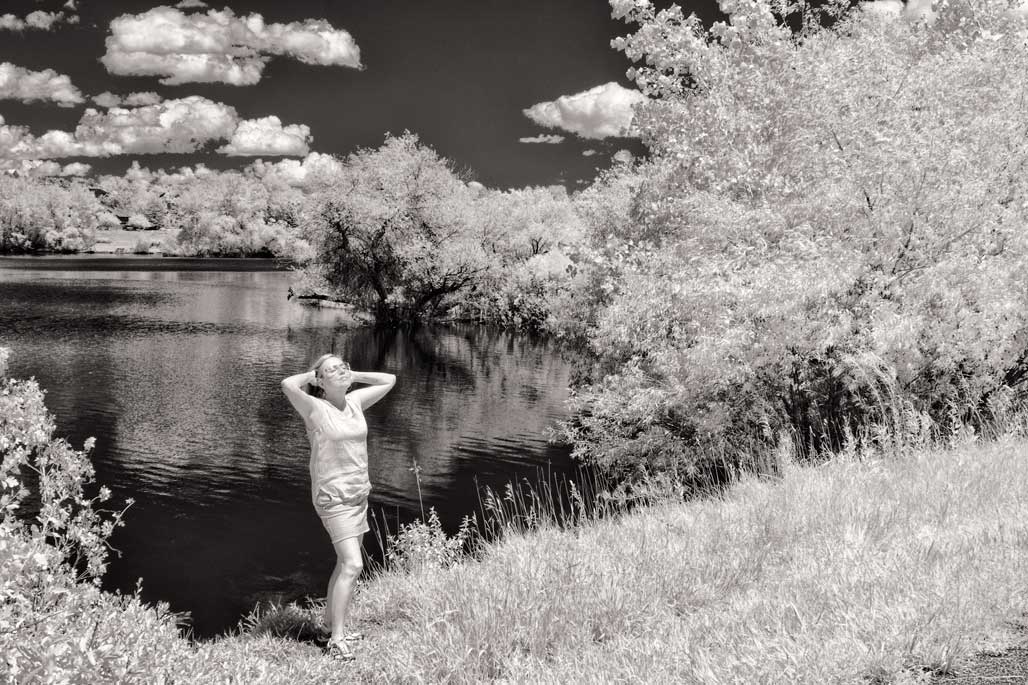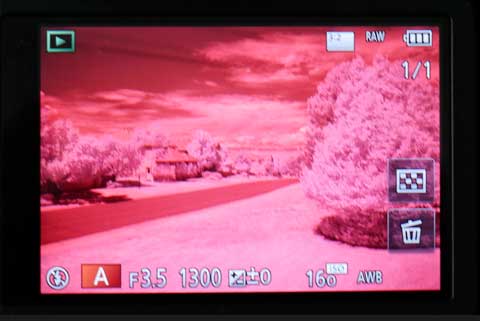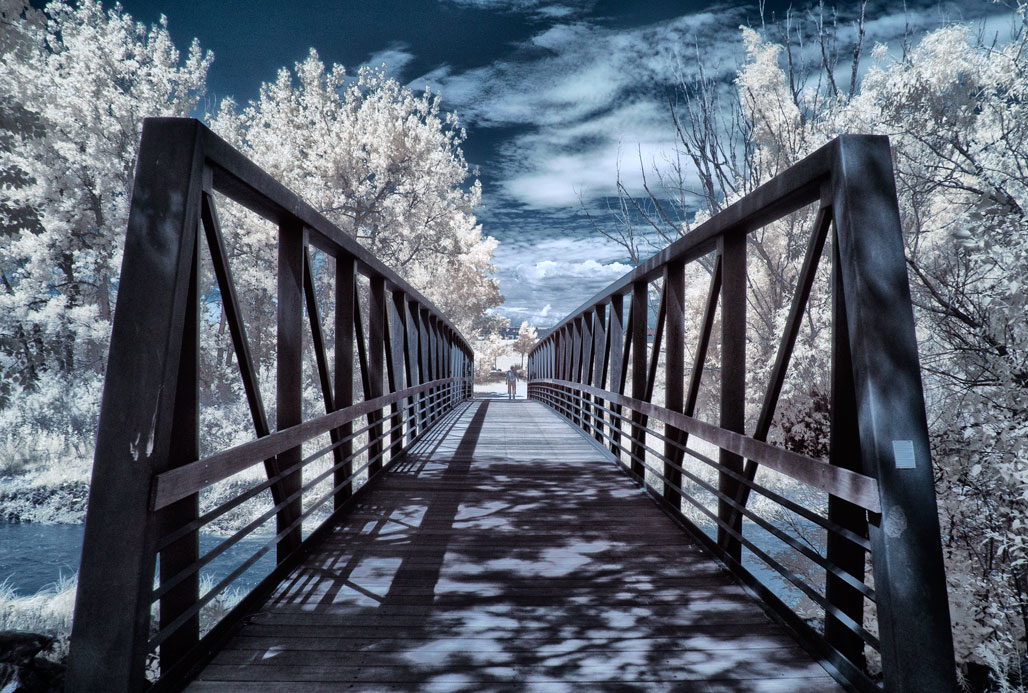Today’s Post by Joe Farace
“To me, infrared photography is not a special effect like some Instagram filter, it’s a different way of looking at photography and light and the world itself.”— Dean McIntyre
 In a previous blog post about infrared photography, I suggested that when getting started in this medium that you shoot in monochrome mode. no white balance needed. After all, everything is right there on your LCD. So it’s a good way to start shooting infrared and your camera’s LCD screen gives you a pretty good preview of what a process RAW file, will look like.
In a previous blog post about infrared photography, I suggested that when getting started in this medium that you shoot in monochrome mode. no white balance needed. After all, everything is right there on your LCD. So it’s a good way to start shooting infrared and your camera’s LCD screen gives you a pretty good preview of what a process RAW file, will look like.
But it doesn’t always have to be that way,. For example, as I’ve gained more experience in working with my Panasonic Lumix G6 that was converted to infrared by LifePixel with their Enhanced IR filter I’ve had a change of heart. This particular conversion is the equivalent of using a 665nm filter and allows more visible colored light to pass through to the sensor and is especially suited for color IR photography with great saturation and color range.
 Based on recent experience, this particular filter conversion seems more sensitive to variations in exposure than my Lumix G with Standard IR conversion that was used to make the above image of Mary at Bingham Lake. Overexposed Enhanced IR images can be used to produce a good black and white image, because as LifePixel themselves state, “BW also looks quite good although with a bit less contrast without adjustments.” But not so much for a color image.
Based on recent experience, this particular filter conversion seems more sensitive to variations in exposure than my Lumix G with Standard IR conversion that was used to make the above image of Mary at Bingham Lake. Overexposed Enhanced IR images can be used to produce a good black and white image, because as LifePixel themselves state, “BW also looks quite good although with a bit less contrast without adjustments.” But not so much for a color image.
 Since traditional histograms don’t work as well for infrared capture, you can get some idea of the sky and foreground separation directly on the camera’s LCD screen or in the EVF for mirrorless camera shooters.
Since traditional histograms don’t work as well for infrared capture, you can get some idea of the sky and foreground separation directly on the camera’s LCD screen or in the EVF for mirrorless camera shooters.
The magenta-charged images on the LCD screen (above right) look a bit like color negative film and may be a harder to view but you can clearly see separation between the sky and foreground, if there is any. With sufficient separation you can produce the kind of color infrared images that are shown in my tutorial How to Produce the Blue Sky Infrared Technique. Obtaining proper exposure when shooting with the Enhanced IR filter—bracketing may be required—lets you to produce images like the bridge photograph at left.
How I made this shot: This photograph of a bridge over Cherry Creek was made at McCabe Meadows using a Panasonic Lumix G6 that was converted to infrared by LifePixel using their Enhanced IR filter. Lens was the Lumix G Vario 12-32mm f/3.5-5.6 at 12mm or 24mm equivalent. Exposure was 1/250 sec at f/11 and ISO 400.
